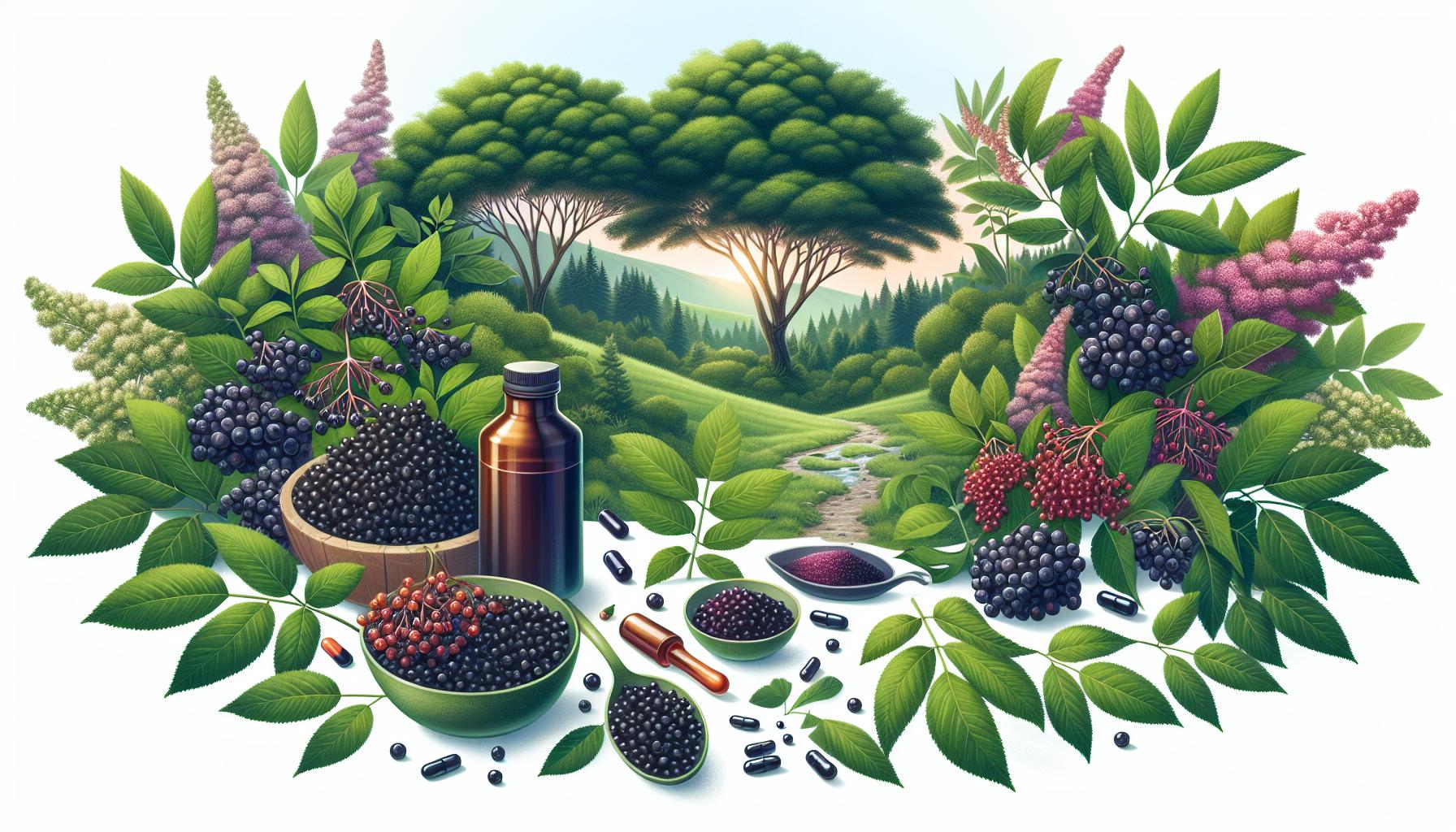Unlocking the Secrets of the Elderberry: An Introduction
Why oh why, do you wonder, are those splendid clusters of Elderberries appearing in areas you least expect? In a bid to demystify this delectable fruit’s environmental preference, this article indulges in disclosing just exactly where Elderberries grow naturally. As straightforward as the answer might seem, you’d be surprised to know that these berries paint a wider canvas across the globe, donning landscapes with their distinct charm and appeal. Grab your hiking boots, we’re about to embark on a globe-trotting adventure – chasing the trail of elderberry bushes!
Elderberries: An Eclectic Fruit’s Abode
To understand where elderberries thrive, one must first meet the unassuming hero of our tale – Sambucus, a group of flowering plants traditionally famed for their medicinal properties. Members of the Adoxaceae family, they’re virtuosos in adaptability and resilience. Elderberries aren’t picky tenants; they can call a wide range of environments their home. From North America’s wide-open landscapes to Europe, Asia, and parts of Africa, elderberries are as cosmopolitan as you might get.
An Elderberry’s Preferred Surroundings
Elderberries have a few favorite hangout spots. Never the kind to shy away from a bath, they prefer damp, fertile, and well-drained soils where they can drench their roots and bask in the sun or partial shade. Areas near streams, riverbanks, or places where groundwater is not too far-off, are some of their go-to destinations.
The Perennial Travelers: Elderberries Around the Globe
Spread across multiple continents, elderberries are the perennial globe-trotters of the plant world. Swing over to North America, and you’ll find Sambucus Canadensis and Sambucus Nigra subsp. variation Caerulea adding a magical touch to landscapes. Hop across to Europe, and Sambucus Nigra might surprise you with its ardent love for European soils. Meanwhile, in the warmer parts of Asia and North Africa, Sambucus Ebulus stakes its claim.
A Stellar Performance in Various Climates
Despite their international presence, elderberries are no divas. These nature’s jewels can put on a stellar performance across various climates, from temperate and tropical to subtropical regions. It’s all in an elderberry’s day to bloom amid the contrasts, making them an unassuming global presence.
Elderberries in the States: A Special Mention
An elderberry’s journey in America is an intriguing one. Enchanting forests, valleys, and wetlands alike, elderberries have reveled in almost every nook and corner of the country. From the East Coast’s enigmatic landscapes to landscapes as disparate as Florida’s subtropics and Oregon’s temperate climes, elderberries are truly America’s sweetheart.
The Pacific Northwest: Elderberry’s Special Corner
The Pacific Northwest holds a special place in an elderberry’s heart. Blessed with an ideal climate and soil conditions for the growth of both Sambucus Canadensis and Sambucus Nigra subsp. variation Caerulea, this region presents a picturesque panorama of elderberry blossoms and berries.
Conclusion: The Widespread Charms of Elderberries
As we draw the curtains on our global elderberry tour, it’s clear that this humble berry’s presence spans a thrilling range of landscapes and environments. From sun-soaked plains to shady riverbanks, elderberries know how to live life large, painting the world with their sassy colors and conferring beneficial health properties along the way. An elderberry, it seems, is the epitome of resilience and adaptability, thriving wherever it lays its roots, paving its way into our hearts and habitats alike.
Frequently Asked Questions
1. Do elderberries need full sun?
Elderberries are amicable neighbors; they can enjoy sunbathing in full sun or subtly savor the partial shade. They aren’t divas when it comes to light requirements, demonstrating considerable flexibility.
2. What climate is best for elderberries?
Elderberries don’t stick to one postal code. They prosper magnificently in a diversity of climatic conditions, from temperate to tropical and subtropical regions.
3. Can elderberries grow in sandy soil?
While elderberries prefer damp, fertile, and well-drained soils, they can extend some tolerance towards less-than-ideal soil conditions, including sandy or rocky substrates.
4. Are elderberries native to North America?
Yes indeed! Sambucus Canadensis and Sambucus Nigra subsp. variation Caerulea are two types native to North America, adorning landscapes from coast to coast and even in the southern reaches of Canada.
5. Can you grow elderberries in your backyard?
Absolutely! With basic care and an understanding of their needs, elderberries can become an enchanting addition to your garden space. Just keep them under full sun to partial shade, offer them plenty of water, and they’ll be happy campers.


